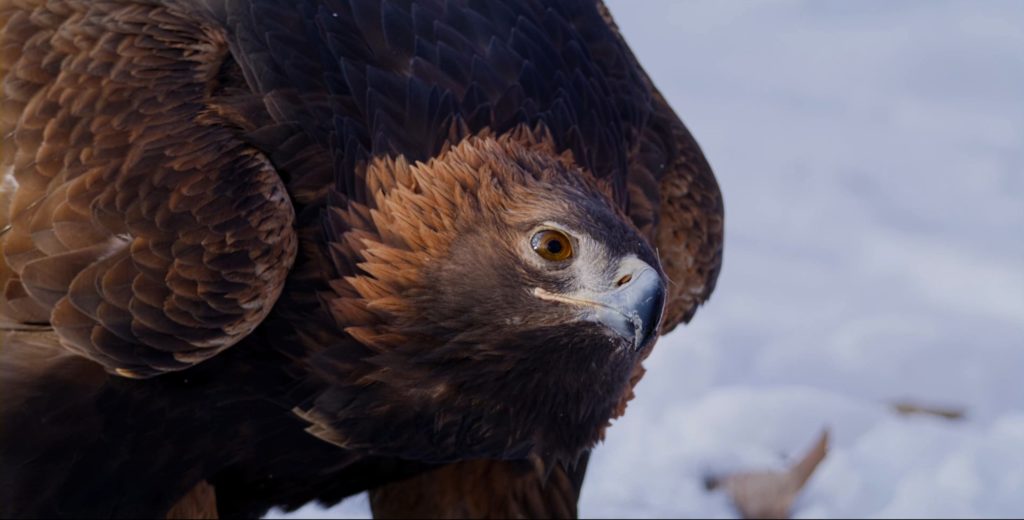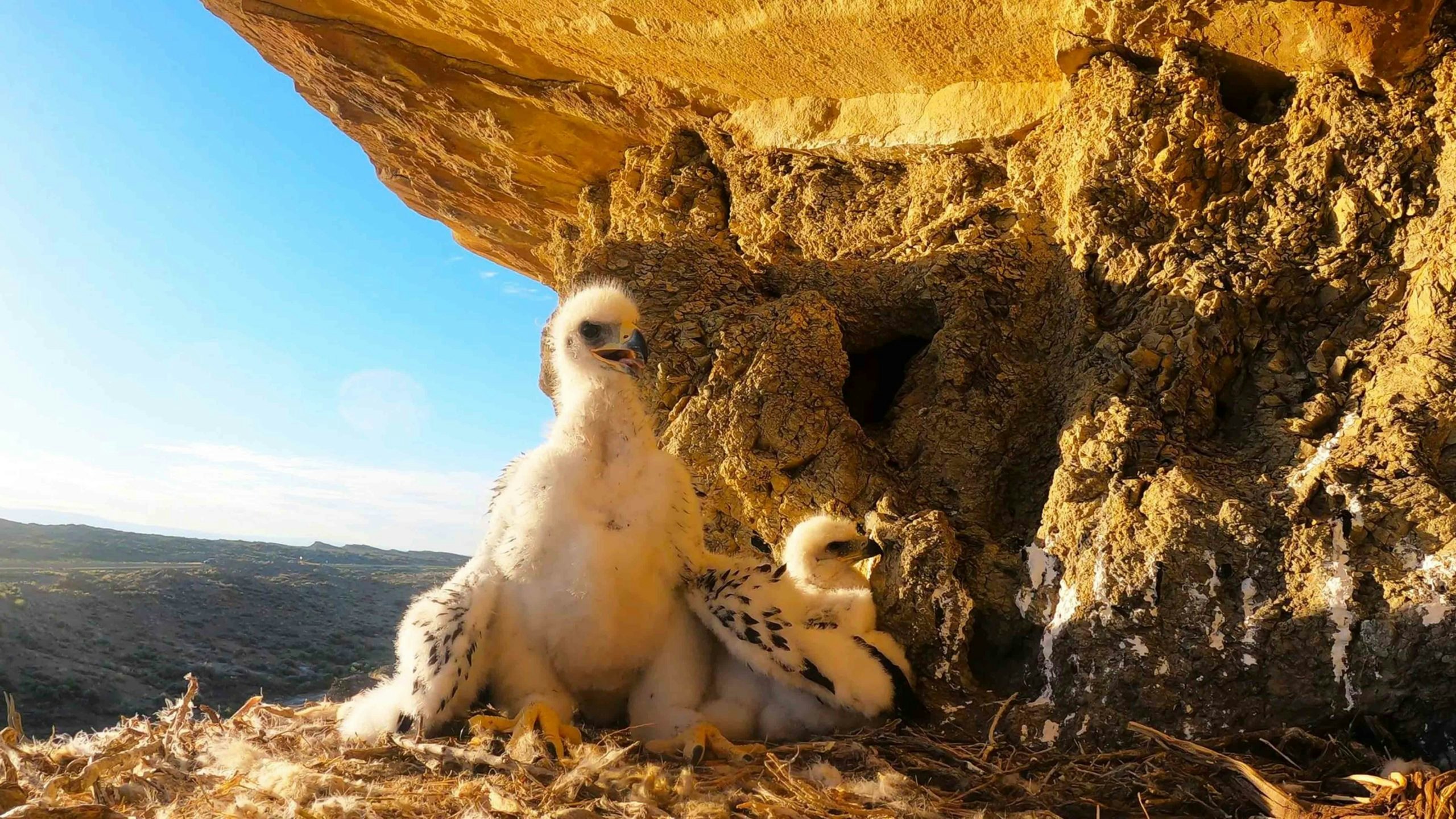If asked, most Americans might think of the grizzly bear or the wolf as the most dangerous predator of the Bighorn Basin in Wyoming.
Not so, according to a world-renowned scientist, whose focus is on birds of prey.
“We know that we have grizzlies occasionally that come down in the basin now, and wolves and coyotes and everything,” said Dr. Charles Preston, founding curator for the Draper Museum of Natural History at the Buffalo Bill Center of the West in Cody. “But really, the apex predator in that system is the golden eagle.”
A new documentary that was screened this weekend in Jackson and in Cody spotlights the research that Preston has supervised for the past 18 years. “Golden Eagles: Witnesses to a Changing West” is an hour-long documentary created by Wild Excellence Films, and features dramatic footage of scientists going where very few humans have gone before.
“We have always loved, respected and been inspired by Golden Eagles,” said David Rohm, who with his wife Melissa created the documentary. “As we wrote in the script to the film, ‘It’s a memorable moment, some would say life changing, when you see a golden eagle in the wild for the first time.’”
The film’s central characters are the golden eagles, raptors with wingspans up to 7-feet, which are the apex predator in the sagebrush steppe ecosystem that defines Wyoming’s Bighorn Basin.
“An apex predator is a predator that has no predators on its own as an adult,” Preston told Cowboy State Daily. “So nothing really preys on the eagles out there. Golden eagles have taken coyotes and other smaller predators, or even larger predators in some cases that they can handle. I mean, they have the ability to even kill an adult pronghorn or deer.”
The film documents Preston and his team as they rappel down cliffs to eagle nests, place leg bands on the raptors, and record the habits and behaviors of the birds as part of a long-term study.
“I’ve been conducting this monitoring program, this research on golden eagles in the Bighorn Basin, since 2009 formally, and really exploring it before then,” said Preston. “We developed an exhibition that opened in 2018 at the Draper Natural History Museum at the Buffalo Bill Center of the West.”
Rohm said he first became aware of Preston’s work when a mutual friend, Leslie Patten, worked at the Draper Museum with Preston. Patten, a local author and conservationist, mentioned Preston’s work with the eagles to the Rohms, who were fascinated by his research.
“(Preston’s) golden eagle work opened our eyes to the challenges facing one of our favorite birds, in one of our favorite places on the planet: the Greater Yellowstone Ecosystem,” said Rohm. “He has made discoveries that are key to the birds’ survival, and we want to help tell the story of his work and the challenges the golden eagles are facing to help further their conservation.”
Rohm said his admiration for the birds grew during the filming.
“Golden eagles are so intelligent, they can work out complex problems in their environments,” he said. “They’re smart and tough, but at the same time, caring and devoted to their chicks.”
Preston pointed out that the species faces threats from wind turbines, illegal shootings and poisonings, vehicle collisions and electrocution from power lines. And much of the Rohms’ focus in creating the documentary was to raise awareness of the need for conservation of the birds’ habitat.


Preston was skeptical, however, that a film crew could capture the spirit of these unique birds of prey.
“Even though you see golden eagles around it’s very difficult to get the kind of film that would make a compelling documentary,” said Preston.
But the filmmakers had a vision. The documentary features never-before-seen footage of baby eagles; aerial views of the sage-covered plains; footage of other wildlife such as grizzly bears and sage grouse; and narration by renowned naturalist and author Kenn Kaufman.
“They captured some incredible footage, some that I’d never seen before,” said Preston. “I just pointed, and talked to them about how careful they need to be around the eagle nests, and not to approach too closely. And they were very respectful of that.”
Filming in the Bighorn Basin came with its challenges, according to Rohm.
“Adjusting to the altitude and heat in the Basin, especially in 2021, and clambering up rocks to get up to where the birds were being banded while carrying pounds and pounds of camera gear was hard, but worth every second,” Rohm said. “One day, it was approaching 105 degrees and our high-end film camera shut down. On another day, there was so much wildfire smoke that it blocked out the sunset.”
Preston said the golden eagle is an icon of wide open, wild spaces throughout the northern hemisphere, but especially in western North America.
“It’s certainly an icon of the sagebrush steppe system that we find ourselves surrounded by here in the Bighorn basin and in most of Wyoming,” he said.
The Rohms said that through their documentary, they hope to bring attention to a fascinating creature that plays an integral role in the ecosystem of the American west.
“Golden eagles are unfamiliar to many people, and we want to help change that,” said Rohm. “It’s an honor to see these birds up close and to get to witness the research.”
The film will be broadcast on PBS stations in several states this spring, premiering on Wyoming PBS Wednesday, August 24 at 7 p.m., and will be available on the PBS app later in the summer, according to Rohm.
“The Golden Eagle film is running, or will soon be running, in multiple PBS markets, like Miami, Colorado, Illinois, Seattle, Northern California, the San Franscico Bay area and New Mexico,” Rohm said. “By August the program will be available to PBS stations nationwide.”





